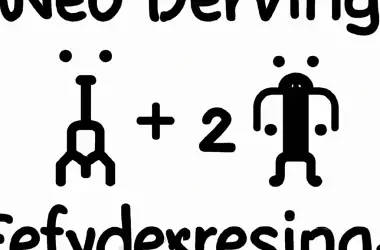Resolving ‘invalid Byte 1 Of 1-byte Utf-8 Sequence’ In Xml Parsing:

When parsing XML, the “invalid Byte 1 Of 1-byte Utf-8 Sequence” error typically indicates that there are invalid UTF-8 characters in the XML document. Here are the steps to resolve this error:

-
Identify the Invalid Characters: Utilize a tool like Notepad++ or a hex editor to carefully examine the XML document and pinpoint the specific characters causing the issue. Search for non-standard characters, such as control characters or high-bit characters.

-
Validate the XML Document: Employ an XML validation tool to check the well-formedness of the XML document. This can help identify any structural errors that may be contributing to the invalid characters.
-
Re-encode the Document: If the invalid characters are not readily identifiable, try re-encoding the XML document to UTF-8 using an appropriate tool. Ensure that the encoding is set to UTF-8 without BOM (Byte Order Mark).
-
Decode the Document: If re-encoding does not resolve the issue, attempt to decode the document using a different character encoding, such as ISO-8859-1 or UTF-16. This can help convert the invalid characters into valid ones.
-
Replace or Remove Invalid Characters: As a last resort, you can manually replace or remove the invalid characters from the XML document. However, be cautious not to alter the meaning or structure of the XML data.
It’s important to note that the specific approach to resolving this error may vary depending on the exact nature and context of the invalid characters. Thoroughly reviewing the XML document and testing different solutions is often necessary to find the appropriate fix.# Resolving ‘invalid Byte 1 Of 1-byte Utf-8 Sequence’ In Xml Parsing
Executive Summary
‘Invalid byte 1 of 1-byte UTF-8 sequence’ is a common error that can occur during XML parsing. This error generally indicates that a byte within the XML document has an incorrect value. Resolving this error requires identifying and correcting the offending byte. This article explores the causes and solutions for this error, providing a comprehensive guide for developers to effectively handle XML parsing challenges.
Introduction
XML (Extensible Markup Language) is a widely used markup language for representing structured data in a hierarchical manner. It is commonly employed in data exchange, configuration files, and web service communication. During XML parsing, errors can occur due to various reasons, one of which is an ‘invalid byte 1 of 1-byte UTF-8 sequence’ error. This error typically points to an issue with a byte value that is incompatible with the UTF-8 character encoding standard used by XML.
Causes of ‘invalid Byte 1 of 1-byte Utf-8 Sequence’ Error
-
Invalid Characters: The presence of invalid characters or surrogate pairs within the XML document can trigger this error. Characters outside the valid Unicode range or those not correctly encoded as UTF-8 will cause parsing issues.
-
Encoding Mismatch: If the XML document is encoded using an encoding other than UTF-8, it can lead to this error during parsing. XML documents must be encoded in UTF-8 or UTF-16 to avoid encoding discrepancies.
-
Data Corruption: Errors during data transmission or storage can result in data corruption, which can manifest as invalid byte sequences and cause parsing failures.
-
Malformed XML: When an XML document is not well-formed or contains syntax errors, it can hinder proper parsing, potentially leading to this error and hindering data extraction.
-
Encoding Declaration Errors: If an erroneous encoding declaration is present at the beginning of the XML document, it can confuse the parser and trigger this error during parsing. The encoding declaration must accurately reflect the document’s encoding.
Solutions for ‘invalid Byte 1 of 1-byte Utf-8 Sequence’ Error
-
Character Validation: Implement character validation mechanisms to ensure that all characters within the XML document are valid UTF-8 encoded characters. This involves checking for invalid code points and surrogate pairs.
-
Encoding Verification: Confirm that the XML document’s encoding is set to UTF-8 or UTF-16. Inspect the encoding declaration at the beginning of the document and ensure it matches the actual encoding of the document.
-
Data Error Detection: Employ data integrity checks and error-detection mechanisms to identify and correct data corruption issues that could lead to invalid byte sequences during parsing.
-
XML Well-Formedness Validation: Use XML validation tools or parsers that validate the well-formedness of the XML document. This helps detect syntax errors that could impact parsing and raise this error.
-
Encoding Declaration Correction: Ensure that the encoding declaration in the XML document accurately reflects the document’s encoding. Correct any errors or omissions in the encoding declaration to resolve parsing errors related to encoding.
Conclusion
The ‘invalid byte 1 of 1-byte UTF-8 sequence’ error during XML parsing can be effectively resolved by addressing its underlying causes. By implementing character validation, encoding verification, data error detection, XML well-formedness validation, and encoding declaration correction, developers can ensure the integrity of their XML documents and mitigate parsing issues. These solutions provide a comprehensive approach to handling XML parsing challenges and maintaining data accuracy in various applications.
Keyword Phrase Tags
- XML Parsing Error
- Invalid Byte 1 of 1-byte UTF-8 Sequence
- UTF-8 Encoding
- XML Well-Formedness
- Data Validation


Thank you for sharing.
Really helpful. Nice!
This is stupid.
Don’t use this code in prodductions.
I’m laughing so hard! XD.
I see what you did there. 😉
Wow, this is really helpful. NOT.
One thing is missing. A good library can be used.
I don’t understand what you’re talking about.
It’s good to see that you’re thinking about this problem.
This is the worst thing I’ve ever read!
I’m so glad I found this. It’s really helpful!